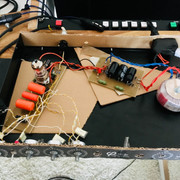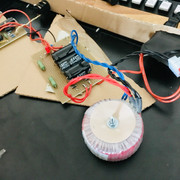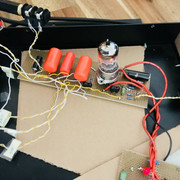1. Keep the heater wires away from anything around the input (R1, R2, C1 and R3). Most hum in a correctly wired tube amp is going to come from the magnetic fields given off by the relatively high current of the heater wires which can be coupled into the high impedance high gain circuitry of the input and amplified. So you want to run the two wires close to one another so that the fields cancel each other out. This is why they are usually gently twisted together. If the twist is not close at the end and is laying on top of input circuitry (like R1, R2, R3 C1), it will induce hum on the input which will be amplified.
2. Use a separate ground for the stuff connected to the input (R2 and C1 in particular) and run that wire back to the filter caps of the supply. If the high impedance high gain input is connected to the end of several other stages that are dumping a lot of current into the ground, because a wire itself has a small resistance and inductance, it will develop "noise" that can then make a positive feedback loop.
3. Make sure your 1/4" plug is grounded to the metal enclosed chassis. If you're testing, use a separate wire to act as the chassis and run it back to the earth of the mains plug (which is then connected to the ground at the filter caps of the supply.
4. Any high impedance high gain inputs should be fed with a well shielded cable and generally minimize unshielded runs (so put R1 right next to the tube grid) but only ground the shield at the chassis end. High impedance high gain inputs are going to amplify any noise induced in the exposed wires just as well as the intended signal so protect the inputs.











